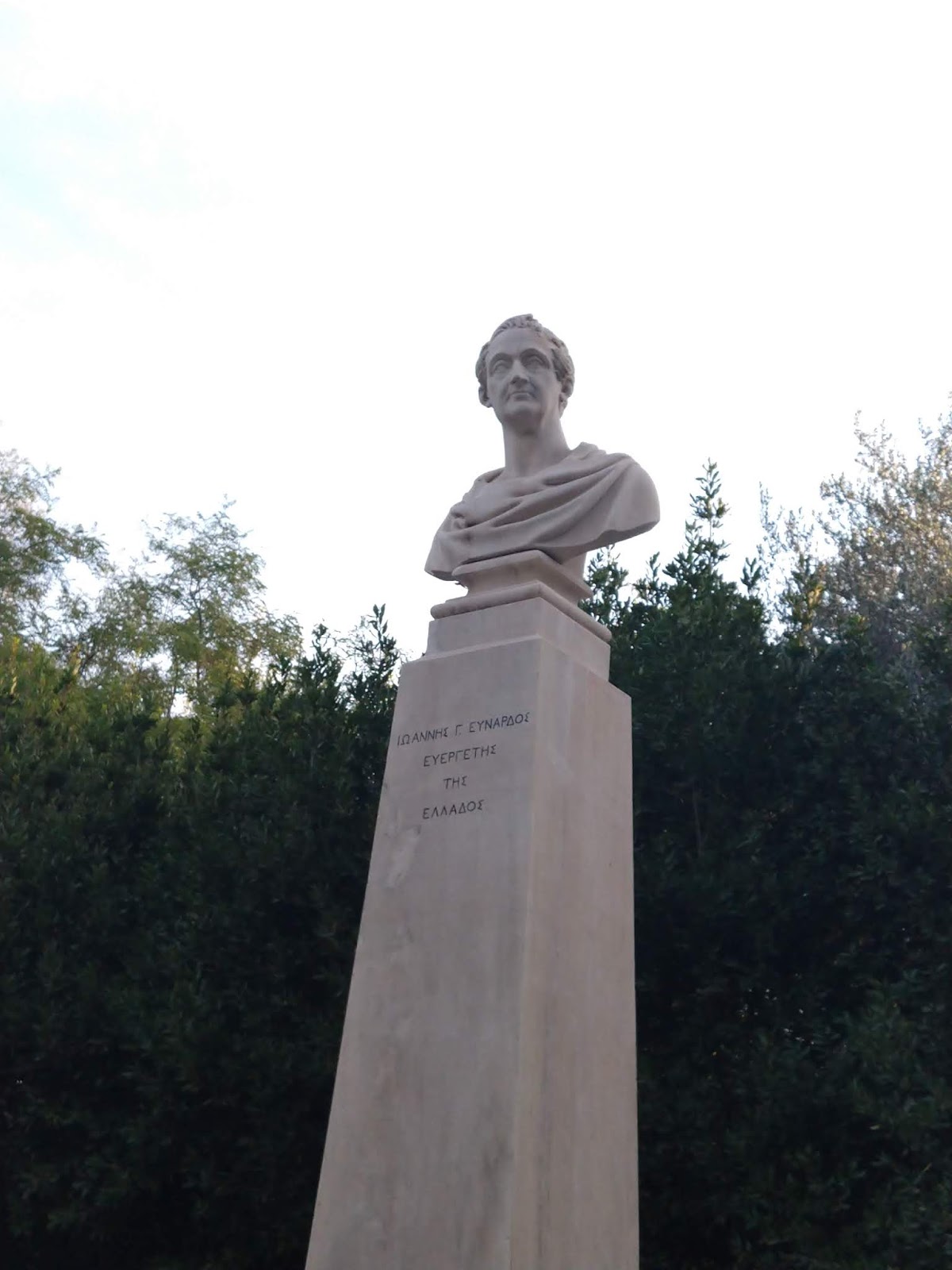We added Greece to our itinerary at the last minute. Bob said, “Hey, since we’ll be in Italy anyway and Greece is so close, how about we finish the vacation on a Greek Island?” He had been to Greece about 30 years ago and remembered it fondly.
So the islands were out
So Athens was in
So we added three days in Athens to the journey. I found a boutique hotel in a location that Booking.com gave a grade of 10. Bob did some research into what to do while there, finding guides to what to do in one day in Athens, or two days in Athens. He worried that we had booked too much time there and would be bored.
The National Garden
 |
| National Garden selfie |
 |
| Emporr busts in the National Garden |
The next morning, getting up early to run, Bob and I discovered that the National Garden, with miles upon miles of running trails and views of the Temple of Zeus, was only two blocks away. We saw scores of fit runners covering the trails in small groups. Then we went to the breakfast room. Mama mia! Hotel Arethusa offered a delicious, abundant Greek/American buffet breakfast that included Greek yogurt, granola; spinach, meat and cheese pies; eggs, toast, fruit, cold cuts and cheese, Nutella and jams, eight kinds of coffee, juices, hot chocolate, and more. All this for just 80 euros a night ($90)!
Changing of the Guard
We started, at our cab driver’s recommendation, at the Parliament at 11 AM on Sunday morning to watch the Changing of the Guard. This happens quietly every hour round the clock, but the Sunday morning show is 30 minutes long and a spectacle designed to entertain a crowd. And in fact, hundreds of people turned out to watch, jostling with each other to get the best pictures and video. It was wonderful! Soldiers somehow managed to look manly high-kicking in perfect synchronization while wearing traditional country guard uniforms, which consisted of white tutus, matching white tights, red berets with long black feathers down one side, and black clogs with large tassels on top. Their serious faces and the long red and black rifles they carried certainly helped.
Hop On Hop Off Bus
Next we boarded the Hop On Hop Off bus to get a quick lay of the land. We took lots of great pictures from the top level of the double-decker, where every corner brought a new discovery. The tour was informative and comprehensive, and the headphones actually worked well. We used the bus as transit after the initial circle, and visited the original Olympic Stadium (including the underground tunnel, a museum that featured Olympic posters and torches, and of course the winners’ podium), the Temple of Zeus (our timing at sunset created amazing light for the pictures), Hadrian’s Arch, the Plaka (an atmospheric old city with wonderful shopping and dining options), the Acropolis and Parthenon (of course), the National Archeological Museum (where you can eat in a café surrounded by ancient sculptures), and even the Flea Market.
Views from the HoHo:
| Acropolis |
| Fish market |





































